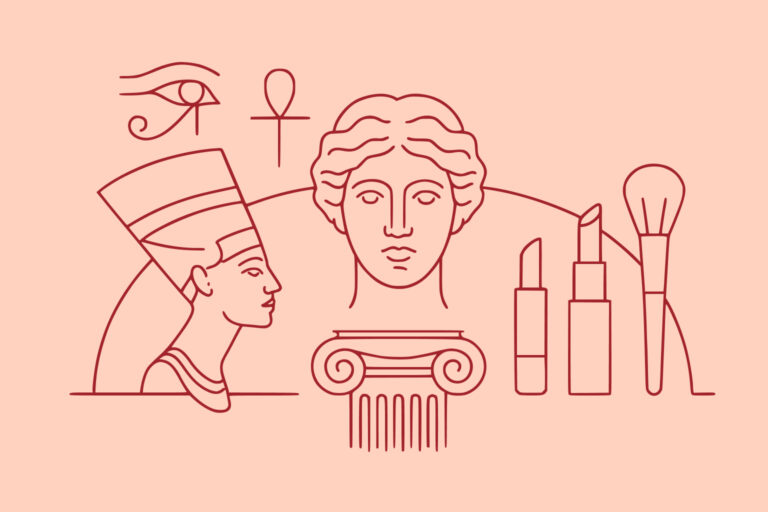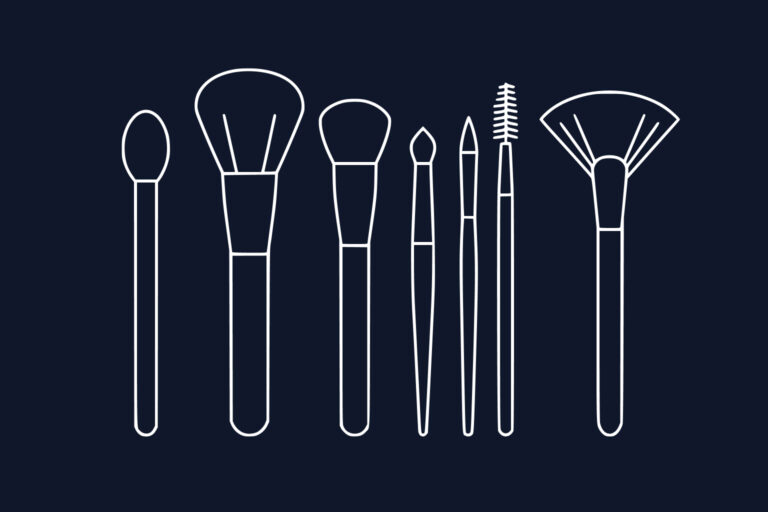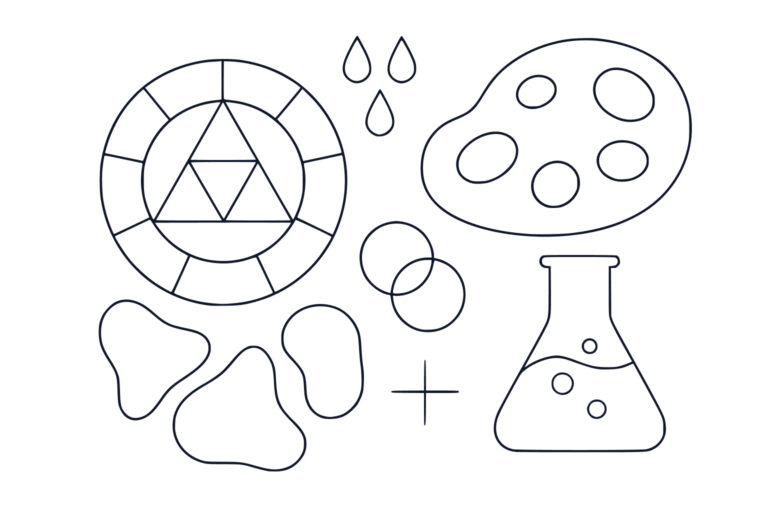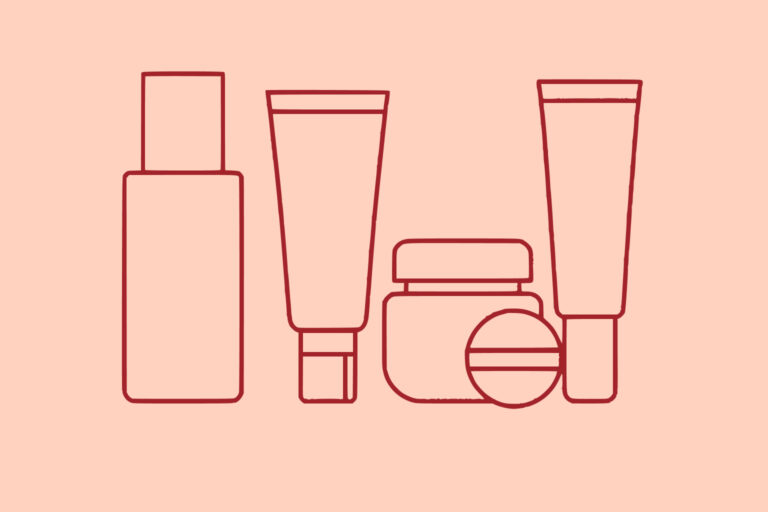1960s Mod Beauty and Swinging London: The Revolution of Youth Culture
Published by Professional Makeup Artist London
The 1960s marked a seismic shift in beauty culture, as youth rebellion and social change transformed makeup and hairstyles from conservative elegance to bold experimentation. Centred in London’s vibrant fashion scene, the mod movement rejected the polished perfection of the 1950s in favour of geometric precision, graphic lines, and youthful energy. This decade witnessed the emergence of beauty icons like Twiggy, whose androgynous features and dramatic eye makeup redefined feminine beauty standards. The period’s emphasis on individuality, creativity, and youth culture established new paradigms that continue to influence contemporary beauty trends.
The Birth of Mod: London’s Fashion Revolution
The mod movement emerged in London’s working-class communities during the late 1950s and exploded into mainstream culture throughout the 1960s. This youth-driven subculture rejected traditional class distinctions and embraced modern design, music, and fashion that reflected post-war optimism and technological advancement.
Mod beauty was characterised by clean lines, geometric shapes, and bold contrasts that mirrored the movement’s aesthetic principles. The look emphasised youth and androgyny over traditional feminine curves, creating a new beauty ideal that celebrated childlike features and slender figures.
The King’s Road and Carnaby Street became epicentres of mod fashion and beauty innovation. Boutiques like Biba and Mary Quant’s Bazaar introduced revolutionary approaches to both clothing and cosmetics that challenged established beauty norms.
Mary Quant’s influence extended beyond fashion to cosmetics, as she launched makeup lines that featured bold colours and innovative packaging designed to appeal to young consumers. Her approach to beauty emphasised fun, experimentation, and accessibility rather than the formal perfection that had dominated previous decades.
The mod movement’s emphasis on modernity and technology influenced beauty product development, leading to new formulations and application methods that supported the era’s graphic, precise aesthetic.
Understanding the cultural context of mod beauty helps modern makeup artists appreciate how social movements can influence application techniques and aesthetic choices.
Twiggy: The Face That Launched a Thousand Trends
Lesley Hornby, known professionally as Twiggy, became the decade’s most influential beauty icon, embodying the mod aesthetic with her pixie haircut, dramatic eye makeup, and androgynous figure. Her look challenged traditional beauty standards and established new ideals that emphasised youth and uniqueness over conventional prettiness.
Twiggy’s signature eye makeup featured heavily lined upper and lower lashes, often enhanced with drawn-on lower lashes that created a doll-like effect. This technique required precision and artistry, using liquid eyeliner to create individual lash lines that extended the natural lash pattern.
The pale, matte complexion that Twiggy popularised contrasted sharply with the warm, glowing skin tones of previous decades. This look was achieved using light foundation shades and translucent powder that created an almost ethereal appearance.
Twiggy’s eyebrows were kept natural and relatively full, contrasting with the thin, highly arched brows that had been fashionable in the 1950s. This natural approach to brow shaping complemented the era’s emphasis on youthful authenticity.
The nude or pale pink lip colours that Twiggy favoured allowed the dramatic eye makeup to remain the focal point of her look. This approach to colour balance became a fundamental principle of mod beauty that continues to influence modern makeup application.
Twiggy’s influence extended beyond specific techniques to encompass an entire approach to beauty that emphasised individual expression and creative experimentation over adherence to established rules.
The Geometric Revolution: Vidal Sassoon and 1960s Hair
Vidal Sassoon revolutionised hairstyling during the 1960s with his geometric cuts that embodied mod principles of precision, modernity, and functionality. His approach to hair design treated each cut as a piece of architecture that moved naturally with the wearer’s lifestyle.
The five-point cut that Sassoon created for Twiggy became one of the decade’s most iconic hairstyles. This precisely angled bob featured sharp lines and perfect symmetry that required minimal styling whilst maintaining its shape through movement.
Sassoon’s philosophy rejected the elaborate styling and artificial enhancement that had characterised previous decades. Instead, he created cuts that looked beautiful when left natural, reflecting the mod movement’s emphasis on authenticity and ease.
The bob variations that emerged during this period included asymmetrical cuts, graduated layers, and geometric shapes that challenged traditional notions of feminine hairstyling. These cuts required exceptional technical skill to execute properly but offered unprecedented freedom from daily styling routines.
Colour treatments during the 1960s became more experimental, with stylists using bleaching and tinting techniques to create dramatic contrasts and unusual colour combinations. This experimentation reflected the decade’s embrace of artifice and creativity in personal expression.
The influence of Sassoon’s geometric approach to haircutting established principles of precision and structure that continue to inform modern hairstyling techniques and training methods.
Makeup Techniques: Precision and Drama
1960s makeup application required new levels of precision and technical skill to achieve the graphic, geometric effects that defined the mod aesthetic. The decade’s emphasis on bold contrasts and clean lines demanded sophisticated application techniques.
Eye makeup became the decade’s primary focus, with techniques that created dramatic, doll-like effects. The signature mod eye look required multiple steps: pale eyeshadow or white base, precisely applied black eyeliner on both upper and lower lids, heavily mascara’d upper lashes, and drawn-on lower lashes.
The lower lash technique involved using liquid eyeliner to draw individual lash lines beneath the eye, creating the illusion of dramatically long, separated lashes. This required steady hands and careful spacing to achieve the uniform, graphic effect that defined the look.
Foundation application emphasised creating a pale, matte base that provided a blank canvas for dramatic eye makeup. This often involved using foundation shades lighter than the natural skin tone, set with translucent powder to eliminate any shine or warmth.
Contouring during this period was minimal, as the mod aesthetic favoured flat, graphic effects over dimensional sculpting. When used, contouring techniques were subtle and focused on creating clean lines rather than natural-looking shadows.
Lip application required precision to achieve the pale, perfectly defined shapes that complemented dramatic eye makeup. Lip liner was used to create precise edges, whilst pale pink or nude colours kept the focus on the eyes.
Colour Palettes and Product Innovation
The 1960s introduced revolutionary colour palettes that broke with traditional beauty conventions. The decade’s embrace of artifice and experimentation led to bold new approaches to colour selection and application.
White and pale colours became central to mod beauty, with white eyeshadow, pale foundations, and nude lip colours creating the ethereal, otherworldly effects that defined the look. This represented a dramatic departure from the warm, natural colours that had dominated previous decades.
Black became equally important as a defining colour, used for dramatic eyeliner, mascara, and graphic accents that created the stark contrasts characteristic of mod beauty. The interplay between black and white became a signature element of the aesthetic.
Bright, artificial colours were embraced for special effects and creative expression. Electric blues, shocking pinks, and vibrant greens appeared in eyeshadows and eyeliners that celebrated the decade’s love of synthetic, space-age aesthetics.
Product packaging reflected the mod movement’s emphasis on modern design and youth appeal. Cosmetics companies introduced sleek, geometric packaging in bold colours that appealed to young consumers and reflected contemporary design trends.
New product formulations supported the decade’s graphic aesthetic requirements. Improved liquid eyeliners, longer-wearing mascaras, and better colour payoff in eyeshadows made it possible to achieve the precise, dramatic effects that mod beauty demanded.
Understanding how cultural movements influence colour selection and application provides valuable insights for contemporary makeup artistry.
The Influence of Photography and Media
The 1960s saw dramatic changes in fashion photography and media representation that influenced how beauty trends developed and spread. The decade’s emphasis on visual impact and graphic design affected both makeup techniques and beauty standards.
Fashion photographers like David Bailey, Terence Donovan, and Brian Duffy created images that emphasised bold contrasts and graphic effects. Their work required makeup that would photograph well under studio lighting and reproduce effectively in print media.
The emergence of colour photography in fashion magazines influenced makeup colour choices and application techniques. Makeup artists had to consider how their work would appear in full colour rather than the black and white photography that had dominated previous decades.
Television’s growing influence on popular culture affected beauty trends, as the medium’s technical requirements influenced how makeup was applied and what looks were considered attractive on screen.
The rise of youth-oriented media, including magazines like Honey and 19, created new platforms for beauty trends that specifically targeted young consumers. These publications featured makeup and hairstyle advice that reflected mod aesthetics and values.
Celebrity culture became increasingly important during this period, with models like Twiggy, Jean Shrimpton, and Penelope Tree becoming household names whose beauty looks influenced mainstream fashion.
International Variations and Cultural Exchange
While London remained the epicentre of mod culture, the movement’s influence spread internationally, creating regional variations that reflected local cultural values and aesthetic preferences.
American interpretations of mod beauty tended to be more commercial and accessible, with department stores and mainstream cosmetics companies adapting the look for broader consumer markets. This led to simplified versions of mod techniques that were easier to achieve at home.
French beauty culture maintained its emphasis on sophistication and elegance whilst incorporating mod elements. Parisian interpretations of the look tended to be more refined and less dramatic than their London counterparts.
Italian fashion and beauty culture contributed to mod aesthetics through innovative product development and sophisticated colour palettes. Italian cosmetics companies introduced new formulations and packaging designs that supported mod beauty requirements.
The international exchange of beauty ideas accelerated during this period as travel and communication improved. This led to rapid spread of trends and increased cross-cultural influence in beauty practices.
Regional adaptations of mod beauty reflected local preferences whilst maintaining the movement’s core principles of youth, modernity, and individual expression.
The Space Age Influence
The 1960s space race profoundly influenced fashion and beauty, with futuristic themes appearing in everything from clothing design to cosmetic packaging. This space-age aesthetic became integral to mod beauty culture.
Metallic eyeshadows and futuristic colour palettes reflected the decade’s fascination with technology and space exploration. Silver, chrome, and iridescent finishes became popular choices that created otherworldly effects.
Product design incorporated space-age themes, with cosmetics packaging featuring sleek, modern designs that evoked spacecraft and technological innovation. This packaging became part of the overall aesthetic experience of using mod beauty products.
Hairstyles incorporated futuristic elements, with geometric cuts and artificial textures that suggested technological precision rather than natural beauty. Hair accessories often featured space-age materials like plastic and metal in bold, modern designs.
The influence of science fiction and futuristic imagery on beauty trends demonstrated how cultural fascinations could directly impact aesthetic choices and product development.
Youth Culture and Beauty Democratisation
The 1960s marked the first time that youth culture significantly influenced mainstream beauty trends, creating a democratisation of fashion and cosmetics that challenged traditional hierarchies.
Young people became primary drivers of beauty trends rather than simply following adult fashion. This shift reflected broader social changes that gave youth increased economic power and cultural influence.
The mod movement’s emphasis on accessibility and individuality made beauty trends more democratic. Unlike the expensive, time-consuming beauty routines of previous decades, mod looks could be achieved with relatively simple techniques and affordable products.
DIY beauty culture emerged during this period, with young people experimenting with makeup and hairstyles at home rather than relying exclusively on professional services. This led to increased creativity and personal expression in beauty practices.
The decade’s rejection of traditional authority extended to beauty standards, with young people creating their own definitions of attractiveness that often contradicted established norms.
This democratisation of beauty culture established patterns that continue to influence contemporary beauty trends and consumer behaviour.
Technical Innovations and Product Development
The 1960s saw significant innovations in cosmetic formulation and application tools that supported the decade’s demanding aesthetic requirements.
Liquid eyeliner technology advanced considerably during this period, with new formulations offering better precision, longer wear, and more intense colour payoff. These improvements were essential for achieving the graphic eye effects that defined mod beauty.
Mascara formulations improved to provide the dramatic lash effects that were central to 1960s eye makeup. New brush designs and product consistency allowed for better separation and definition of individual lashes.
Foundation technology evolved to provide the pale, matte finishes that mod beauty required. New formulations offered better coverage whilst maintaining the flat, non-dimensional effects that complemented the decade’s graphic aesthetic.
Hair care products developed to support the geometric cuts that defined 1960s hairstyling. New setting lotions, styling aids, and finishing products helped maintain the precise shapes that these cuts required.
Application tools became more sophisticated, with improved brushes, applicators, and styling implements that allowed for greater precision in both makeup and hair styling.
Understanding these technical developments provides valuable context for modern product selection and application methods.
Social and Cultural Impact
The beauty trends of the 1960s reflected and influenced broader social changes that transformed Western culture during this pivotal decade.
The mod movement’s emphasis on youth and individuality challenged traditional authority structures and established new patterns of cultural influence that continue to shape contemporary society.
Beauty became a form of personal and political expression, with makeup and hairstyle choices reflecting broader attitudes about conformity, rebellion, and social change.
The decade’s embrace of androgyny and non-traditional beauty standards challenged established gender roles and opened new possibilities for self-expression and identity.
Economic changes during the 1960s gave young people increased purchasing power, creating new market segments that influenced product development and marketing strategies.
The period’s emphasis on creativity and experimentation established beauty culture as a legitimate form of artistic expression rather than simply personal grooming.
Legacy and Modern Influence
The beauty innovations of the 1960s continue to influence contemporary makeup and hairstyling, with many techniques and aesthetic principles remaining relevant today.
The decade’s emphasis on graphic, precise makeup application established standards for technical skill that continue to influence professional makeup artistry. Modern artists study 1960s techniques to understand fundamental principles of line, contrast, and colour balance.
Geometric haircutting principles developed during this period remain central to modern hairstyling education and practice. The precision and structural understanding that Sassoon introduced continue to inform contemporary cutting techniques.
The mod movement’s approach to individual expression and creative experimentation established patterns that continue to influence how beauty trends develop and spread in contemporary culture.
Product innovations from this period, particularly in eyeliner and mascara formulation, established many of the performance standards that define modern cosmetics.
The decade’s integration of youth culture and beauty trends created precedents for how contemporary beauty culture responds to social movements and generational change.
Understanding this historical development provides valuable context for contemporary approaches to eye makeup artistry and creative expression.
Recreating 1960s Mod Looks Today
Modern makeup artists and beauty enthusiasts can recreate authentic 1960s mod looks using contemporary products and techniques adapted from historical methods.
Achieving the signature mod eye look requires precise liquid eyeliner application, strategic use of white or pale eyeshadow, and careful attention to lash definition. Modern products offer better performance than period cosmetics whilst maintaining the graphic effects that defined the look.
The pale, matte complexion that characterised mod beauty can be recreated using contemporary foundations and setting powders that provide better coverage and longer wear than 1960s products.
Geometric haircuts inspired by Sassoon’s work can be created using modern cutting techniques and styling tools that offer improved precision and versatility.
The lower lash technique that was central to mod eye makeup can be achieved using modern liquid eyeliners and fine brushes that provide better control and more precise application than historical tools.
Understanding the fundamental principles behind 1960s techniques allows modern artists to adapt these looks for contemporary clients whilst maintaining their essential character and impact.
Conclusion
The 1960s mod beauty movement represents one of the most revolutionary periods in cosmetic history, establishing new paradigms for individual expression, technical precision, and cultural influence that continue to shape contemporary beauty culture. From Twiggy’s iconic eye makeup to Sassoon’s geometric haircuts, this decade demonstrated how youth culture and social change could transform established beauty standards.
The period’s emphasis on graphic precision, bold contrasts, and individual creativity established technical and aesthetic principles that remain relevant for modern makeup artists and beauty enthusiasts. The mod movement’s integration of fashion, beauty, and cultural expression created new possibilities for personal identity and artistic achievement.
Understanding the 1960s beauty revolution provides valuable context for appreciating contemporary trends and techniques. The decade’s innovations in product development, application methods, and aesthetic philosophy continue to influence how we approach beauty and self-expression today.
Whether exploring the broader evolution of cosmetic culture or seeking to master specific techniques, the 1960s mod movement offers rich inspiration and practical knowledge that remains vital for contemporary beauty practice.




